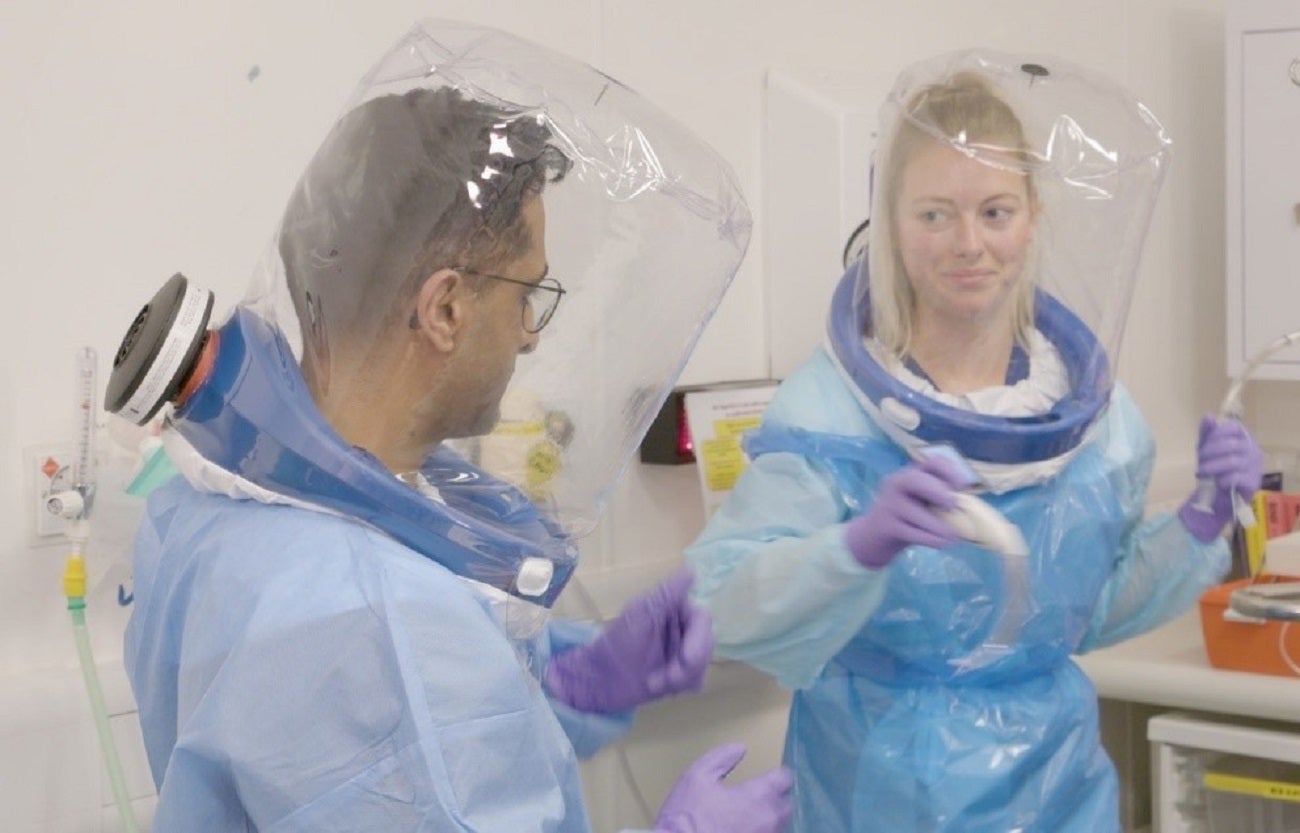
When the Covid-19 pandemic was at its peak earlier in the year, hospital staff found themselves under unprecedented pressure. Staff in intensive care units (ICUs) were covered head to toe in full personal protective equipment (PPE), in a bid to minimise the spread of the deadly disease which had left so many patients sedated and on ventilators.
Despite the inherent communication difficulties for any group of people that suddenly finds themselves kitted up in surgical masks and visors, many were still left to rely on disparate and outdated communications technologies such as walkie talkies, pagers and intercoms. All of these devices require physical touch to operate, which can mean that a medical operative may need to to remove and replace part of their PPE – something that can be incredibly time consuming in a fast-paced hospital.

Discover B2B Marketing That Performs
Combine business intelligence and editorial excellence to reach engaged professionals across 36 leading media platforms.
Intercoms can be perhaps the most inconvenient of the bunch, requiring medical staff to leave high-risk areas and remove their PPE to access them. To complicate matters further, the devices aren’t well-suited to two-way conversation, and usually require one person to stop talking before the other can interject – something which isn’t particularly useful for clear communication.
In the rapid environment of an ICU or operating room, miscommunication can mean the difference between life and death. Many members of medical staff are now seeking out more efficient methods of communication in clinical settings, which can allow them to interact more effectively despite the constraints of PPE.
Medical Technology has rounded up some of the best and brightest clinical communications technologies, which could make daily operations easier for medical staff.

US Tariffs are shifting - will you react or anticipate?
Don’t let policy changes catch you off guard. Stay proactive with real-time data and expert analysis.
By GlobalDataWireless headsets: effective communication in the operating room
Following the outbreak of Covid-19, professional communication headset company Quail Digital has reported being approached by orthopaedic operation rooms, where the headsets are now being worn under PPE.
Quail’s headsets were originally deployed in fast food restaurants and the retail sector, before being adopted by healthcare providers.
The muffling effect of a mask on a person’s speech can be significant, especially if the listener is not stood close to or looking directly at them. If a surgeon cannot afford to take their eyes away from the operating field and mishears a member of their team due to their mask, the results could be catastrophic. Having a microphone in place to stream whatever any member of the surgical team is saying directly into their colleagues’ headsets can thus substantially approve the communicative abilities of the group.
Up to 30 people are able to be tuned into these headsets at any one time. The devices are made of microbial plastic and are worn within PPE, rather than on top of it, minimising their potential exposure to any pathogens they could then carry outside – including Covid-19.
Bubble PAPR: safe, but still communicating clearly
Staff at Wythenshawe Hospital in the UK have begun trialling a specially-designed powered air-purifying respirator (PAPR) dubbed the Bubble PAPR, which is designed to help keep workers safe during the pandemic – but still communicate clearly.
The device consists of a reusable collar that sits around the neck, and a single-use, recyclable plastic hood. A fan in the collar draws in air through a viral filter while it delivers cooling airflow around the face.
Bubble PAPR is designed to be just as effective as a mask in containing the spread of Covid-19 between patients and staff, but it has several major benefits. Not only is it more comfortable for the wearer, but their face is always clearly visible. This vastly improves communication between staff and improves the patient experience too – being able to see the face of the person treating you when you’re hospitalised is, unsurprisingly, far more pleasant than having it obscured.
The respirator has been designed as part of an ongoing collaboration between Manchester University Hospital NHS Foundation Trust, Designing Science and the University of Manchester to identify unmet clinical needs and develop new solutions. It hasn’t yet been used in general hospital practice, been has been trialled in a simulated clinical environment and met with a positive reaction from staff.
A patent has now been filed and the development team are working with manufacturing partners to produce Bubble PAPR in large volumes, in the hopes it will be available for clinical use before the end of the year.
Dynamic mesh communication: hands-free and up-to-speed
Dynamic mesh communication (DMC) is technology similar to the Bluetooth mesh networking protocol already used by many ‘smart’ devices. DMC is most commonly seen in motorcycle communications, keeping groups of up to 15 riders in contact with each other on the roads. It turns each motorcycle rider’s unit its own communications hub, which tracks and maintains communications with the other riders in its network.
If utilised in healthcare settings, DMC could drastically improve workplace communications for clinical staff. Clinicians need to exchange complex, time-critical information, and can find walkie-talkies and telephones are too cumbersome and text-based communication too slow. A DMC network would allow for hands-free, multi-way, spoken communication between everyone in a given work group, even for those in identity-obscuring PPE.
A DMC can operate over distances of up to a mile and self-heals to accommodate people on the network dropping in or out without any disruption. Staff also wouldn’t have to deal with connecting to a network like they may with a Bluetooth device, and automatically signs in any registered unit as soon as it comes in-range. There’s also no need to install base stations to run a DMC network, as each registered unit acts as its own communication hub.





